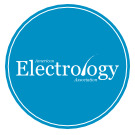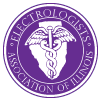Are your electrolysis needles single-use?
Absolutely! For the safety and hygiene of our clients, we use only sterile, single-use needles during each electrolysis treatment. A fresh needle is used for every session to minimize the risk of infection and ensure the most comfortable experience possible.
Can women begin or have electrolysis treatments during pregnancy?
Unwanted hair can be caused by hormonal changes brought on by pregnancy. Electrolysis can be performed on any normal skin. This includes pregnant women. We suggest that you seek the advice of your physician before beginning treatment.
Is electrolysis more painful than laser?
Laser hair removal is a lot less painful than electrolysis. It’s a rubber-band snap compared with a bee sting, and Dr. Farhang says some of the newer laser hair removal devices are even less uncomfortable.
A laser hair removal treatment covers larger areas at once, such as the legs and back. When you get electrolysis hair removal your electrologist removes the individual hairs from the body one by one with a very fine needle that’s being inserted into the natural opening of the hair follicle alongside the hair shaft.
Can hairs be removed from moles?
Electrolysis can be performed on most moles where licensing regulations allow it. Your electrologist may require written approval from your physician.
Does shaving make more hair grow?
No, it does not – it is a myth that has been around for a very long time. Your hair cycles stay the same and actually, when we begin electrolysis with a shaved area, your hairs die faster than if you had previously done anything else such as waxing, threading, laser, or tweezing.
Areas of your face and body that have been shaved results in less time required for the electrolysis treatment. If you shave before and during the electrolysis process, the hairs will die faster.
If you have certain hair types on your face such as vellus, light or dark coarse hairs, we recommended that.
What causes ingrown hairs?
Irritating, sometimes painful ingrown hair can occur after waxing, laser treatments or even shaving, which can cause ingrown hair in the bikini area, inner thigh, upper leg (front or back), knee, lower leg, chin, and neck.
What types of skin are prone to ingrown hair?
Some skin types are more likely to get ingrown hair than others. These include:
• African American
• Olive skin or darker
• Indian
What areas are more likely to have ingrown hair?
Though ingrown hair can happen anywhere, it is more likely to occur on:
• Male beard
• Male jaw line
• Male neck
• Female chin
• Female neck
• Female jaw line
• Female bikini area
• Female inner thigh
• Female upper or lower legs
How can I get rid of ingrown hair?
Irritating, sometimes painful ingrown hair can occur after waxing, laser treatments or even shaving, which can cause ingrown hair in the bikini area, inner thigh, upper leg (front or back), knee, lower leg, chin, and neck.
What types of skin are prone to ingrown hair?
Electrolysis treatment remains one of the most effective ways to eliminate irritating ingrown hair. To achieve optimal results, you should:
• Tend your skin right before electrolysis session
• Loofah the area twice during the week before the electrolysis session
• Use a facial or body scrub 2-3 times during the week before the electrolysis session.
Does electrolysis really work on ingrown hair?
Ingrown hair sometimes goes away without treatment, however, ingrown hair has the potential to be a serious health hazard. If not properly treated or removed, ingrown hair can become infected and may require medical care. Without proper attention, ingrown hair can lead to scarring or “razor bumps.”
Recurring incidents of ingrown hair is often called folliculitis. This condition occurs when new hair fails repeatedly to grow straight out of your follicles and instead grows curly or crooked just under the skin before it emerges. Though ingrown hair could affect anyone, people with coarse or curly hair are more apt to suffer from ingrown hair or folliculitis.
Though it has since been used to treat all unwanted hair, electrolysis was originally developed to remove ingrown hair and is a very effective solution. In fact, electrolysis is is the only hair removal technique approved by both the Food & Drug Administration (FDA) and the American Medical Association (AMA).
Electrolysis for ingrown hair is completely safe and effective for all hair and skin types. During the treatments, electrolysis restricts the follicle from growing another unwanted hair. Electrolysis should not be confused with laser hair removal, which is not a permanent removal treatment for ingrown hair.
Alison wants you to experience the freedom that comes from permanently removing ingrown hair to help you maintain good health and help you feel more confident about your appearance.
For more information about how electrolysis can help remove your ingrown hair, feel free to schedule a free initial consultation for first-time electrolysis clients.
Does electrolysis hurt on pubic hair?
It does but the discomfort is not unbearable. Different parts of your body have different sensitivities. So if you are going to get electrolysis on your bikini area, you should keep this in mind. The pain level may not be the same as getting the treatment on your legs.
Can you shave before electrolysis?
You should stop shaving for at least 2 days before your appointment. For more information please read Pre-Electrolysis Care Instructions.
Can you shave after electrolysis?
Please do not shave for at least 24 hours (or more) prior to treatment. This provides just enough hair growth necessary for effective removal. Shaving is completely acceptable for the untreated areas after your electrolysis treatment.
How much does 1 hour of electrolysis cover?
Your electrologist removes individual hairs from the body one by one, approximately 200-800 hairs per hour. Laser covers large areas and can treat thousands of hairs.
What is the downside of electrolysis?
There might be some side effects of electrolysis, such as redness, swelling, blisters, and ingrown hairs, but the most common complication is skin edema. These side effects are temporary and typically clear up by themselves within a few days.
What not to do after electrolysis?
We recommend that our clients avoid scratching or over-touching the treated area within the first 24 hours after the treatment. We also recommend not using perfume products immediately after the treatment.
How soon after electrolysis can I exfoliate?
When the redness and crusts are gone. Approximately after 5 days. We recommend using an exfoliation scrub cream every two weeks and stay hydrated the day before, day of, and the day after your electrolysis treatment.
How often should you have electrolysis?
Our clients get one treatment per week or every other week as needed. A treatment can last between 15 minutes and 7 hours, and it can take up to a year to complete all the needed sessions.
Is electrolysis hair removal trans friendly?
Electrolysis is the most reliable option available today that has been proven to remove trans women’s facial hair permanently. Laser can be an acceptable, but laser is usually not enough by itself to remove trans women’s facial hair permanently.
When should a trans person start electrolysis?
You can start electrolysis whenever it feels right for you, whether you are at the start of your transition journey or further along. Some clients have electrolysis early on, to remove male pattern hair growth and feel more feminine.
Does electrolysis get rid of hormonal hair?
If you have increased or abnormal hair growth from hormonal changes, electrolysis can help you manage it!
How long does electrolysis take for MTF?
To fully clear your facial hair permanently it can take anything from 8 months up to 2 years in some cases. The number of sessions needed varies from 8 to 15 sessions. The number of hours needed varies from 90 to 300 hours.
How much does MTF electrolysis cost?
Electrolysis costs $50 to $150 per hour. We’d say to expect about a dollar a minute, but most transgender women find rates between around $50 to $150 an hour.
Who should not have electrolysis?
Electrolysis should never be done to remove hair from a mole or a birthmark. If you have a pacemaker, you should not have electrolysis on any part of your body.
What is the best hair removal for transgender people?
Electrolysis Hair Removal is the best solution to unwanted hair during your transition. Go With Confidence. Save time and stop worrying about shaving or tweezing before leaving the house. You’re always ready to go!
Can I wash my face after electrolysis?
You’ll be advised to not apply soap to the treated areas, and avoid swimming or coming into contact with salt or chlorinated water for a 24-hour period. You can apply alcohol in order to keep the skin clean. After the 24 hour period, it is ok to use a gentle liquid cleanser such as Dove, Cetaphil, or Neutrogena.
Can I take a shower after electrolysis?
Avoid touching the treated area, avoid direct sunlight, warm baths or showers, humid air or anything that could irritate the skin for 24 hours. If by mistake you touched the treated area, we recommend to wash it with a mild soap and then dry it to prevent infection.
How do you prevent pimples after electrolysis?
A warm compress should be applied as soon as you get home after an electrolysis treatment to help prevent pimples. You can use salicylic acid sparingly to dry out a pustule if it appears.
Do you offer male brazilian hair removal treatments?
We currently don’t offer male Brazilian electrolysis or laser hair removal treatments. However, we do provide transgender electrolysis and laser hair removal services for the genital area. During a consultation, we can discuss your specific needs and goals to create a personalized treatment plan.

TG-Friendly by
Laura’s Playground

American Electrology
Association

Electrologists Association
of Illinois


